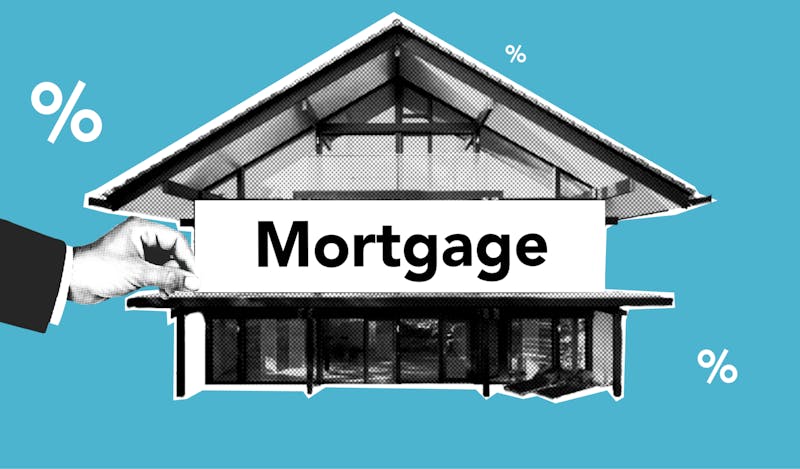Following our previous discussion on debt consolidation and bridge financing, it’s time to shift our focus more on bridge financing itself, particularly its application in real estate investment. Unlike our earlier blog which was relevant to homebuyers, this blog targets real estate investors, for whom bridge financing has emerged as a crucial and popular tool in Canada.
This form of short-term loan provides temporary financing for real estate until permanent or next-stage financing is secured. In this blog, we’ll delve into what bridge loans are, their working mechanism, and the associated risks, along with their benefits relevant to the Canadian market.
So, let’s dive in and learn all about bridge financing for real estate investors, and see how it’s becoming a key tool in the Canadian real estate market.
Understanding Bridge Financing in Real Estate
In real estate investment, understanding various financing options, particularly real estate investment loans, is crucial for maximizing profitability and managing cash flow. Let’s understand bridge financing today.
Bridge financing, often known as a real estate bridge loan, is a clever solution for real estate investors who need to manage the timing gap between selling their current property and buying a new one. It’s like a financial bridge that helps you carry the mortgage on both your old and new properties for a short time. Typically, bridge loans are designed to last from three to six months, but they can sometimes extend up to 12 months or more, depending on your situation.
Here’s a simpler way to look at it: Imagine you need money right now for your real estate project, but you’re waiting for long-term funding to come through. A bridge loan helps you out in this tight spot by giving you the cash you need right away. Although these loans often have higher interest rates, they are usually backed by something valuable, like your property or business inventory. They are one of the best real estate financing solutions.
How Does Bridge Financing Work?
Bridge loans are structured to be quick and flexible. They usually have a higher interest rate than traditional long-term financing due to their short-term nature. For example, if an investor wants to purchase a new property before selling their existing one, they can use a bridge loan to cover the down payment or the entire purchase price, repaying it when the old property is sold.
So, the bridge loan process involves securing short-term financing using existing property as collateral to bridge the financial gap until longer-term financing is obtained or an existing property is sold.
What is an example of bridge financing? Consider an investor who finds a promising property in Toronto worth $1 million. They plan to renovate and flip the property but need immediate funding to secure the deal. They opt for a bridge loan of $1 million at an interest rate of 10% for six months. Once the property is renovated and sold for a higher price, the loan is paid back with the proceeds.
Practical Ways Investors Use a Bridge Loan
As one of the real estate funding options, bridge loans can be a powerful tool for real estate investors, offering flexibility and speed in various scenarios. Here’s a look at some practical ways investors might use a bridge loan:
- For Fix and Flip Projects: One common use of a bridge loan is in fix and flip investments. Investors can quickly purchase a property, carry out renovations, and then sell it for a profit. This is particularly useful in hot markets where quick action can mean the difference between securing a valuable property and missing out.
- Buying Before Selling: If you’ve found the perfect investment property but haven’t sold your current one, a bridge loan can fill the gap. It provides the necessary funds to proceed with the purchase while you wait for your existing property to sell.
- Facilitating Property Upgrades: Sometimes, an investment property may require significant modifications or upgrades before it can be sold or rented out. A bridge loan can offer the funds needed to complete these improvements, enhancing the property’s value and investment return potential.
- Extending the Sale Timeline: In some cases, you might need extra time to sell a renovated property at the best price. A bridge loan can give you the time to wait for the right buyer, rather than rushing into a sale.
Risks of Bridge Financing
While bridge loans can be advantageous, they come with risks. What are the risks of bridge financing?
- Higher Interest Rates: Due to their short-term nature, bridge loans often have higher interest rates compared to traditional loans.
- Time Sensitivity: If the sale of the current property or refinancing takes longer than expected, the borrower may face financial strain.
- Market Volatility: Changes in the real estate market can affect the value of properties, impacting the investor’s ability to repay the loan.
When considering bridge financing, choosing the right bridge loan lenders is crucial, as the terms, interest rates, and flexibility offered can significantly impact the success of your investment venture.
In Canada, bridge loans are offered by banks, credit unions, and private lenders. Private money bridge loans are particularly popular among investors due to their flexibility and quick approval processes.
Bridge Financing Strategies
Successful real estate investors use various strategies when using bridge loans:
- Evaluating Loan Terms: Understanding the terms, including interest rates and fees, is crucial.
- Securing a Loan: To secure a bridge loan, investors should have a strong credit history and sufficient equity in their current property. Lenders also assess the property’s potential and the investor’s experience in real estate.
- Exit Strategy: Investors should have a clear plan on how to repay the loan, either through selling the property or refinancing.
- Market Research: Keeping abreast of the real estate market helps in making informed decisions.
Advantages of Bridge Financing
Bridge financing offers several advantages, especially in the context of real estate investment. Some of these benefits include:
- Speed of Funding: Bridge loans are known for their quick processing times, allowing investors to access funds faster than traditional financing options.
- Flexibility: These loans provide flexibility in terms of use, helping investors to cover immediate expenses or to capitalize on time-sensitive investment opportunities.
- Short-term Solution: As a short-term financing option, bridge loans can be ideal for investors who plan to sell the property quickly or secure long-term financing in the near future.
- No Prepayment Penalties: Many bridge loans do not have prepayment penalties, which is beneficial for investors who might sell their property or refinance sooner than expected.
- Leveraging Opportunities: Bridge financing enables investors to leverage opportunities that they might otherwise miss due to a lack of immediate funds.
- Bridging the Sale and Purchase Gap: They allow investors to purchase a new property before selling an existing one, which can be crucial in competitive real estate markets.
- Improvement of Property Value: Investors can use bridge loans to improve or renovate a property before selling, potentially increasing the property’s market value.
- Access to Larger Amounts: Often, bridge loans can offer access to larger amounts of capital compared to other short-term financing options, depending on the equity in the existing property.
- Collateral-Based Lending: The loan is primarily based on the value of the property, which can be advantageous for investors with less-than-perfect credit but significant equity in their property.
- Facilitating Cash Flow Management: Bridge loans help in managing cash flow by providing the necessary funds to keep a project moving forward.
Property bridge loans stand out as a strategic solution for investors looking to swiftly navigate the period between acquiring a new investment property and selling an existing one. However, it’s important to approach these loans with a clear strategy and understanding of the associated risks. With proper planning and market knowledge, bridge financing can be a powerful tool in an investor’s arsenal.



